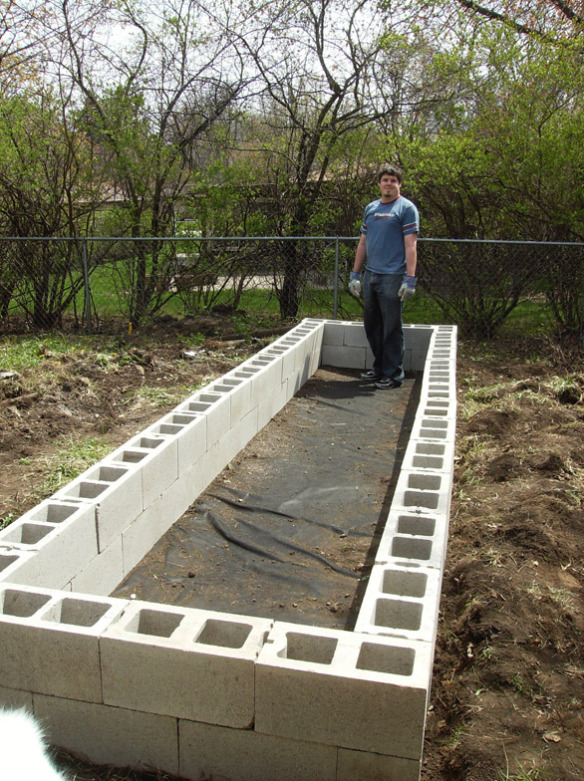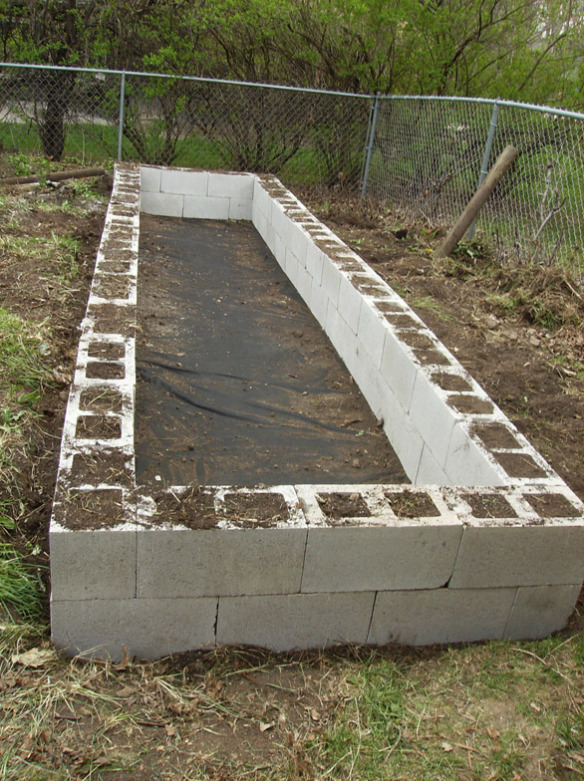You might like:
- Simple DIY Bench Idea
- 10 Creative Ideas to Decorate with Concrete Blocks
- Raised Bed Gardening
 images: Retro Ranch Revamp
images: Retro Ranch Revamp
 More details here…
More details here…
You might like:
 images: Retro Ranch Revamp
images: Retro Ranch Revamp
 More details here…
More details here…
I thought about doing this myself, but I was told cinder blocks are made with toxic fly ash that will leach into your garden. Does anyone know if this is true?
yup i heard that too, that’s why i decided to do the wood raised bed. can you tell me what is that black cover ? where do i get that? Thanks
That black thing is a special material that prevents weed from appearing in your raised garden though it lets the earth “breathe” and also lets water go through it. I bought it in a garden shop/center (here in Hungary). I don’t know the proper name in English but I’m sure the stuff will know what you are talking about if you describe it. 🙂
I mean the “staff” will know :D:D:D
It’s called landscaping fabric, or garden landscape cloth
Cinder blocks to build raised beds and also to plant directly inside the cells of this block are being promoted on Youtube videos and gardening sites. However, there is a strong possibility of poisons in the construction of these products that should deter anyone from using them to grow food.
The product Fly Ash is used as a Portland Cement replacement for up to 30% of the cement used to manufacture these products. For those of you unaware, Fly Ash is generally captured by electrostatic precipitators or other particle filtration equipment before the flue gases reach the chimneys of coal-fired power plants, and together with bottom ash removed from the bottom of the furnace is in this case jointly known as coal ash.
yes saw this on a related site
From what I understand, cinder blocks include ash, concrete blocks (made with 100% concrete) do not.
You are right – DO NOT USE cinder blocks – USE concrete blocks there is a difference concrete does not have the fly ash
From experience with beds just like this, you should paint the inside of the blocks with latex paint to keep them from pulling water from the beds. They act like sponges.
Also, you need to concrete together and rebar at least the corners of the blocks to reduce the problems with frost heaves. Roots can also shift the blocks. Pockets made with PVC pipe can be inserted every four feet down the sides for hoops to be inserted for frost protection cloth or anything else. There are some examples at: gardeningrevolution.com/
excellent point You brought up about painting the blocks.I didn’t think of that.
In cured form cement should not be a problem being a painter myself there are toxants in paint also that are released in the curing process and will deteriorate over time faster than concrete concrete is very dangerouse in demolition (dust form or liquid form and during the curing process I would prefer to line the blocks with a plastic instead of painting IMO
This is a great idea, I would only add cardboard to the bottom of the beds. It is a great weed block and a great way to draw worms to your new bed.
Worms love cardboard.
Good to know.
Everyone’s a critic Eh! FACT:There’s some form of
toxins n everything in you yard and what you buy!
FACT: there’s some form of TOXINS in
everything in you yard and what you buy!
Raised beds without boarders. Alan Chadwick.
It’s weedmat.
Not everything. Diatomaceous earth isn’t toxic.
I have two of these, each With 4×20 plantabe area. I did not use the landscape fabric. They are awesome.
How can you tell a cinder block from a concrete block. I have a raised bed that looks just like the one shown here. This is our 3rd season with it. Carrots, first yr., potatoes the 2nd, cukes and radishes this yr. Cukes definitely like this method. I built a frame and used string for the vines to climb. I have cukes hanging all over it. Also, a word of caution: be sure to fill all the holes in the blocks with soil, or better yet, turn some of them on their sides with the holes open to the soil–we’ve had 3 litters of bunnies this summer. The first ones tried to jump out and fell down in the open holes (we hadn’t thought to fill them all, only some for planting). After rescuing the little guys, we turned the top row of blocks on their sides so the bunnies could come and go and get back into the nest when they needed to. They did no harm to the cukes or radishes. Or the nasturtiums we planted as bug control.
In the Netherlands we call it : antiworteldoek. Water passes trough but plantrooths can’t go trough. My English seems terrible btw.